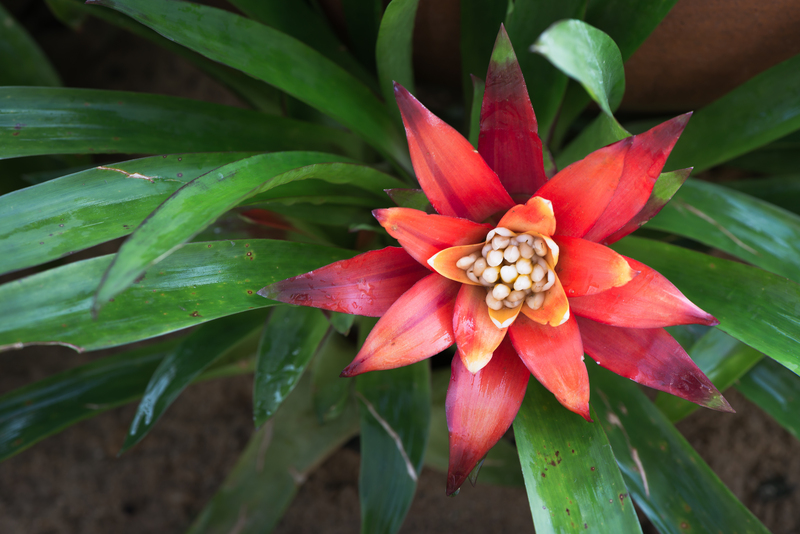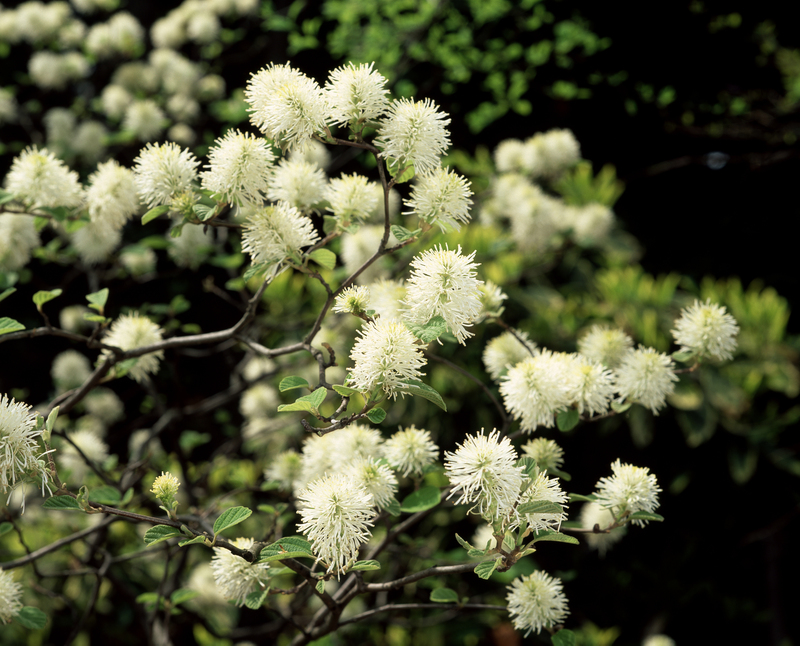Turning Neglect into Nature's Haven: A Garden Rescue
Posted on 14/09/2025
Turning Neglect into Nature's Haven: A Garden Rescue
Is your backyard an overgrown wilderness? If you've ever peered out your window to see a tangle of weeds, discarded gardening tools, and forgotten dreams, you're not alone. Countless homeowners and property managers find themselves with neglected gardens--spaces that seem beyond saving. But what if those spaces aren't lost? What if they could become vibrant sanctuaries where nature thrives? In this comprehensive guide, we'll walk you step by step through the transformative process of turning neglected gardens into nature's havens. Whether you wish to rescue your garden for relaxation, wildlife, or sheer beauty, read on to discover how to orchestrate your very own garden rescue.
Why Rescue a Neglected Garden?
Before we dive into practical steps, it's essential to consider why transforming run-down gardens into flourishing retreats is worth the effort. Reviving a neglected garden doesn't just boost property value--it offers a personal retreat, supports local wildlife, and provides mental and physical health benefits.
- Boosted Biodiversity: Rescued gardens attract birds, bees, and butterflies, playing a role in supporting delicate ecosystems.
- Enhanced Home Value: A beautiful garden increases curb appeal and property worth.
- Personal Enjoyment: Enjoy peace, recreation, and inspiration right outside your door.
- Environmental Impact: Reinvigorated gardens soak up rainwater, minimize urban heat, and filter pollutants.
- Mental Wellness: Spending time in green spaces has proven benefits for stress, anxiety, and overall well-being.

The Garden Rescue Process: A Step-by-Step Guide
Let's begin your transformation journey. Turning a neglected patch into a nature sanctuary involves key stages. Follow these steps to successfully implement your garden rescue and create a haven for nature.
1. Assessment: Understanding the Challenge
Before any weeding or planting, take stock of your garden's current state. Walk your entire space and make notes on the following:
- Sunlight: Which areas get the most sun? Which are shaded?
- Soil Quality: Is your soil heavy and clay-like or sandy and quick-draining?
- Existing Flora: Are there any healthy plants to keep? Identify weeds and invasive species.
- Wildlife: Observe any birds, bugs, or other garden visitors already inhabiting your space.
- Hazards: Watch out for broken glass, rusted metal, or toxic plants.
Documenting these factors sets the foundation for a successful renovation and nature-focused garden rescue.
2. Clearing and Cleaning: Reclaiming Your Space
This is often the most labor-intensive stage: roll up your sleeves and dig in!
- Remove large debris--old pots, rubbish, and forgotten toys.
- Prune or cut back overgrown shrubs and small trees, but leave some established greenery for wildlife refuge.
- Pulll up weeds--take care to remove roots and prevent regrowth. For invasive species, research methods for complete eradication.
- Rake dead leaves and compost them, or use as mulch in garden beds.
- Dispose of hazardous waste properly according to your municipal guidelines.
Pro Tip: Leave a pile of twigs, leaves, and small logs in a shady corner--these provide shelter for hedgehogs, insects, and frogs, key contributors to a thriving garden ecosystem!
3. Planning and Design: Envisioning Your Nature's Haven
After your initial garden clean-up, take a step back and plan for the future. What will your nature haven garden look like? Consider creating zones for wildlife, relaxation, and planting. Sustainable and wildlife-friendly design elements are key for a true garden rescue.
- Wildlife Areas: Designate patches for wildflowers, native shrubs, and insect hotels.
- Seating and Paths: Add winding paths, garden benches, or hammocks using natural materials.
- Ponds and Water Features: Even a small bird bath or dish of water can attract wildlife. For ambitious gardeners, a pond is a biodiversity magnet.
- Composting Corner: Transform fallen leaves and garden clippings into nourishing soil enhancers.
- Vegetable or Herb Plots: Growing your own food is rewarding for you and beneficial for pollinators.
Sketch your ideas--even a basic drawing helps visualize the transformation and keeps you focused on your goal of rescuing your garden into a wildlife-friendly haven.
4. Soil Regeneration: Building a Healthy Foundation
The heart of your garden rescue lies beneath your feet: healthy, living soil! Over time, neglected gardens may develop compacted, depleted, or lifeless soils. Regenerating your soil sets the stage for a lush, sustainable nature garden.
- Test your soil: Home testing kits can reveal pH level, fertility, and organic matter content.
- Add organic matter: Apply compost, manure, and decayed leaves to increase fertility and improve structure.
- Avoid chemical fertilizers: Instead, rely on mulching, compost, worm castings, and natural feed.
- Promote soil life: Leave soil undisturbed where possible to encourage worms, microbes, and fungi.
Healthy soil leads to healthier plants, stronger growth, and a more resilient nature's haven garden.
5. Plant Selection: Choosing Greenery for People and Wildlife
The right plants turn bland gardens into captivating sanctuaries. For a successful garden rescue and to create a true nature haven, prioritize native plants and species well-adapted to your climate. Native plants require less water, fertilizer, and maintenance while providing homes and food for local birds and insects.
- Flowering Perennials: Choose a mix of early, mid, and late-season bloomers such as coneflower, black-eyed susan, or asters.
- Shrubs and Trees: Native hedges (like hawthorn) and fruit trees offer shelter and sustenance.
- Herbs and Vegetables: Try basil, rosemary, or sage, and let some bolt to flower for pollinators.
- Ground Covers: Replace bare soil or compacted areas with creeping thyme or native sedge.
- Grasses and Wildflowers: Create a wild patch to support bees and butterflies--think milkweed and goldenrod.
Pro Tip: Avoid invasive exotics. Consult local extension offices for a list of regionally appropriate choices.
6. Creating Wildlife Features: Fostering a Living Ecosystem
Wildlife is the magic ingredient turning your rescued garden into a vibrant nature's haven. Small changes have a huge impact:
- Install nest boxes and insect hotels for birds and beneficial bugs.
- Plant hedgerows or leave a corner a little wild--perfect for shelter and nesting.
- Add water: A shallow dish or created pond will attract birds, toads, and dragonflies.
- Grow a range of pollen and nectar plants--the more variety, the better for bees and butterflies!
- Don't use pesticides: Let natural predators like ladybirds, lacewings, and bats handle pests instead.
_Even the smallest urban spaces can teem with life if you provide the basics: food, water, and shelter._
7. Ongoing Care: Maintaining Your Nature's Haven
Garden rescue isn't a one-time event--it's an ongoing relationship. Regular, gentle maintenance keeps your haven thriving and inviting through the seasons.
- Mulch annually: Suppress weeds and retain moisture with bark chips, straw, or leaf mold.
- Deadhead flowers: Encourage more blooms but leave some seed heads for birds.
- Monitor for invasive species or pests: Remove unwanted growth before it spreads.
- Rotate crops and replenish nutrients in veggie beds each year.
- Observe and enjoy: Take note of which plants and features attract the widest range of wildlife.
Low-intervention gardening techniques--like leaving some areas 'messy'--increase habitat value for nature, while reducing your workload.
Creative Upcycling: Turning Trash Into Treasure
Nature's havens are not just about plants. Upcycle and reuse items from your garden clean-up for practical and decorative purposes!
- Old bricks or logs: Use as edging, steppingstones, or bug hotels.
- Discarded pots: Stack or half-bury for unique planters or toad shelters.
- Wooden pallets: Turn these into vertical gardens, compost bins, or rustic fences.
- Glass jars and bottles: Create solar lanterns, watering globes, or quirky vases.
Get creative and involve family or friends: upcycling adds charm to your rescued garden and reduces landfill waste.
Case Study: From Abandoned Plot to Wildlife Paradise
To illustrate the true potential of a garden rescue, consider Jane's urban lot. Once choked with bindweed and brambles, it took Jane only a season to orchestrate a dramatic turnaround:
- Initial cleanup: Cleared debris, retained mature shrubs.
- Soil recovery: Layers of compost and mulch revived the beds.
- Planting for diversity: Wildflowers, berry bushes, and a small bee hotel.
- Wildlife discovery: Within weeks, robins nested, butterflies returned, and a hedgehog claimed the leaf pile.
- Ongoing delight: The garden flourishes with minimal intervention and provides Jane a daily slice of green tranquility.
Jane's garden is living proof: rescuing neglected spaces and turning them into nature's havens is not just achievable--it's rewarding!

Common Challenges and Solutions in Garden Rescue
Worried about obstacles? Every neglected garden rescue faces unique hurdles, but with determination, you can overcome them:
- Tough weeds: Cover with cardboard and mulch; repeat as needed.
- Poor soil: Add organic matter, plant green manure crops, and rotate plantings.
- Slugs and pests: Encourage natural predators, hand-pick pests, use organic controls.
- Time constraints: Break the project into small, manageable sections.
- Lack of expertise: Local gardening groups, online forums, and gardening books are great resources.
Conclusion: Start Your Journey from Garden Neglect to Nature's Haven
Don't underestimate the potential hidden beneath a tangle of weeds and brambles! Transforming your neglected garden into a thriving nature's haven may seem daunting, but every small step you take counts--both for your wellbeing and our planet's health.
Enjoy the process: observe, experiment, and celebrate each new bloom and visiting butterfly. A garden rescue is never truly finished--and that's the beauty of living in harmony with nature. It's time to reclaim your green space, inspire your neighbors, and transform garden neglect into a sanctuary for all forms of life.
Further Reading & Resources
- Royal Horticultural Society: Wildlife Gardening
- National Wildlife Federation: Creating a Wildlife Garden
- Gardeners' World: Restoring a Neglected Garden
Ready for your garden rescue adventure? Begin today, and soon you'll be enjoying your very own nature's haven!

